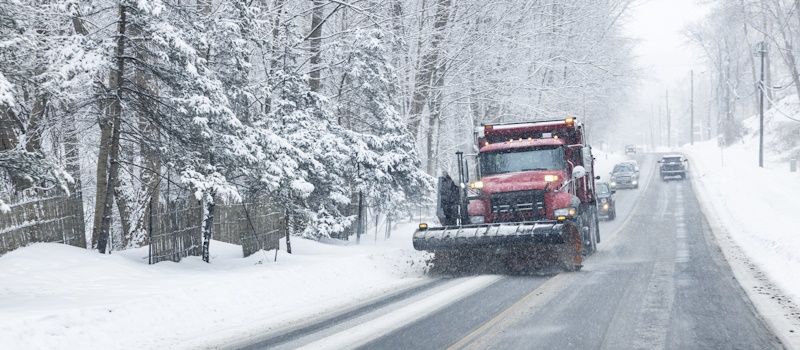It's Time to Protect Your Car From Winter Ice Road Salt and More
It's Time to Protect Your Car From Winter Ice Road Salt and More

It's Time to Protect Your Car From Winter Ice Road Salt and More
Do you take time to prepare your car for winter and reduce the impact of damage caused by extreme weather? Regular maintenance and protective measures can go a long way in safeguarding your vehicle during the winter months. Keep reading to learn more about what might affect your vehicle this winter and what you can do to take care of it.
What Is Road Salt and How Could It Damage My Vehicle?
Road salt (or rock salt) is a coarse sodium chloride de-icing agent used on roads during winter. It enhances road safety by melting snow and ice by lowering the freezing point of water. This turns ice back into liquid, preventing ice formation on the road.
Road salt is used because it's cost-effective, readily available, and generally efficient in melting ice and snow. It is often spread by salt trucks or manually by road crews before or after snowstorms to prevent accidents and ensure smooth traffic flow.
While road salt is crucial for winter road maintenance, it can be harsh for vehicles. Around 20 million pounds of road salt are used each winter. When salt comes into contact with a vehicle, it can cause accelerated rusting and corrosion, particularly on the undercarriage and metal components. Salt promotes oxidation, leading to weakened metal structures and compromised paint. Additionally, salt can seep into crevices and joints, causing parts like brake lines and suspension components to corrode.
How to Protect Your Vehicle This Winter
To prolong the lifespan of your vehicle, you need to mitigate the corrosive effects of road salt and other typical winter challenges. Here are a few ways you can proactively care for your vehicle this winter.
Regular Maintenance: Keep up with regular maintenance, including oil changes and fluid checks. Cold weather can be hard on your vehicle, so ensuring all systems work optimally is crucial.
Regular Washes: Wash your car frequently, especially in the winter months. It might seem pointless since your car will inevitably get dusty-looking again on salty and slushy roads. However, washing your car removes salt and grime that can corrode the paint and metal.
Waxing: Apply a wax coating to protect paint from salt and other contaminants. This provides an additional layer of defense for wet and dirty conditions.
Undercarriage Wash: When you drive in rain, mud, or icy slurries, your car will naturally kick detritus up into the underside of your car. This area is particularly vulnerable to corrosion. Invest in undercarriage washes to remove salt and debris from underneath your vehicle.
Rustproofing: Consider rustproofing your vehicle, especially if you live in an area with heavy snow and salt usage on the roads. This process typically includes spraying a rubber-based product or wax onto the undercarriage for a protective layer against moisture and other materials.
Proper Tire Care: Check your tire pressure regularly, and look for signs of wear (like worn treads) that could make it difficult to control your car on the road. Consider using winter tires for better traction on icy roads.
Garage Parking: If possible, park your car in a garage or covered area to shield it from the elements.
Emergency Kit: Equip your vehicle with an emergency kit containing essential items like a blanket, flashlight, shovel, and sand or cat litter for traction in case you get stuck.
Drive Cautiously: Avoid sudden accelerations, decelerations, and sharp turns, especially in icy conditions. This reduces the risk of accidents and damage to your vehicle.
